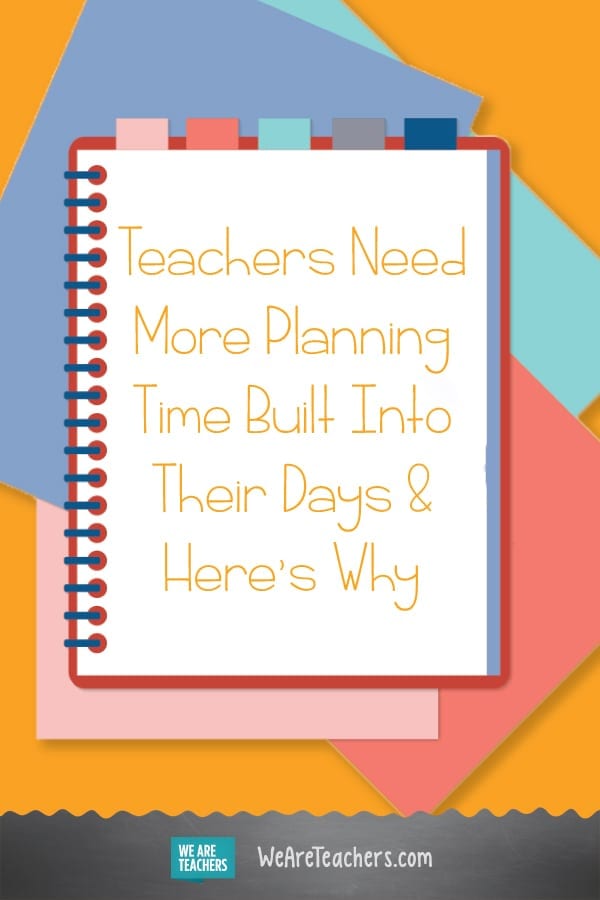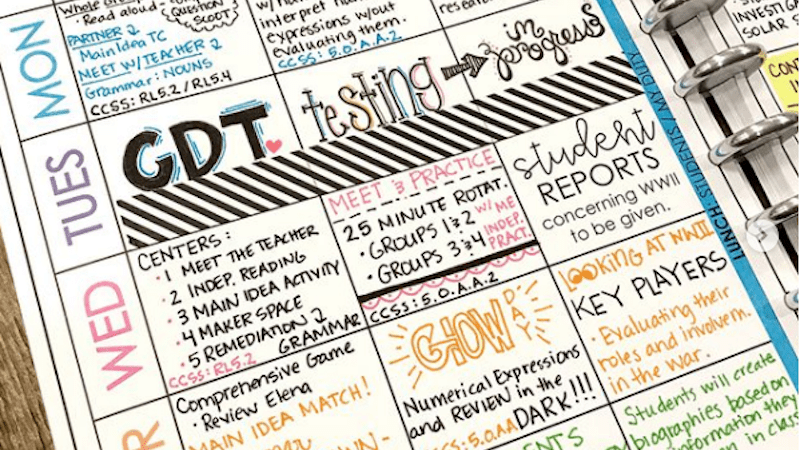Here are five reasons why teachers really, really need more planning time built into their days. And by days, we mean Every. Single. Day.
Top image credit 📸: Joey Udovich on Instagram
1. One cannot “conference” and plan at the same time.
This is like scheduling a spin class and a haircut for the same hour. One or the other will happen, but not both (unless you have a very still head and a very talented spin instructor). If a parent calls at the beginning of my conference period with a 40-minute phone call, if I get called to be in a 504 meeting or an ARD, if a substitute doesn’t show and a class needs coverage, if my principal needs me to show the building manager where exactly the termites came flying out of the wall and into my classroom during tutorials—all of which are not uncommon—planning time gets the axe. (And we all know “getting the axe” really just means moving that work to home, which means missing steak night at your neighborhood bar, which means sad.)
[contextly_auto_sidebar]
2. Effective planning can’t always take place at home.
We all regularly have to take work home. But trying to plan effectively from home with your team just isn’t the same. Some might make the argument that it’s possible, and I will concede if the conditions happen to be ones in which:
- Your entire team is available at home at the same time every day
- Everyone has the technology, savvy, and daily energy for video conference calls
- You have both the foresight and the luggage to bring home all resources from your classroom related to any topics you might cover and need to reference
- Your loved ones are fine with you spending an hour and a half every day shut up in your office to—
Yeah, I’m going to stop my bullet points there because it’s insane. I regularly text, email, and Skype my team from home, but not as my primary method of planning.
3. Instruction is more effective with more planning.
It’s not just the amount of time in being able to plan, but having additional planning time also means having more time to:
- Access support staff, diagnosticians, and campus resources
- Brainstorm and hive mind instead of just diving into planning with limited information
- Research new strategies
- Share effective ideas with other faculty members
I’m barely scratching the surface here. As with any other practice, the more time you can devote to it, the better the quality of your performance will be.
4. New teachers are better supported.
As a baby teacher, I would have killed for daily (or even weekly) feedback on how I was doing from a veteran teacher, but everyone was strapped for time to plan as it was. More time to plan means more opportunities for new teachers to reflect on their teaching and ask questions as well as more opportunities for their mentors to assist and assess them.
5. Everyone is happier.
As someone who was at a school when we moved from having one conference period to two, I will say that it was a school-wide win. Yes, it made our classes a little bigger, but the gains we had in instruction, freed up time at home, and in building relationships—between faculty, staff, and students—far outweighed the disadvantages. Happier teachers have happier students. I don’t know if there’s research to support that, but it feels true.
What reasons do you have for building more planning time into the workday? Come and share in our WeAreTeachers HELPLINE group on Facebook.
Plus, why teachers should be able to wear jeans.


